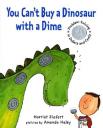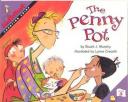The resources listed below are great to use in a 3rd grade classroom for a unit on money. You will find appropriate children’s literature related to money, websites for kids to practice their money skills, and websites for teachers and parents to supplement teaching about money.
Recommended children’s books:
Alexander, Who Used to be Rich Last Sunday by Judith Viorst, Illustrated by Ray Cruz
Alexander returns from the popular Alexander and the Terrible, Horrible, No Good, Very Bad Day to teach a lesson on spending money. Alexander is given a dollar by his grandparents and the story chronicles Alexander as he spends this money on various items, and then as he tries to earn some of his money back in the end. Students can keep track of how much money Alexander is spending throughout the book to help reinforce money skills.
Pigs Will Be Pigs: Fun with Math and Money by Amy Axelrod, Illustrated by Sharon McGinley-Nally
In this story, the hungry Pig family learns about money and buying power as they turn the house upside down hunting for money to buy dinner at their favorite restaurant, the Enchanted Enchilada. They find coins in closets and drawers, under the carpet, even in the washing machine, and combine their money in the end to go out to eat. Students can calculate how much money the pigs find and spend in the book to practice adding and subtracting money.
If You made A Million by David M. Schwartz, Illustrated by Steven Kellogg
In this follow up to How Much Is A Million?, students follow Marvelosissimo the Mathematical Magician and his team of kids as they earn money for various jobs. This book shows realistic pictures of dollars and cents and reinforces the concept of money equivalencies. It also touches on the concepts of savings and interest in a fun and exciting way, through funny and interesting illustrations.
You Can’t Buy a Dinosaur with a Dime by Harriet Ziefert, Illustrated by Amanda Haley
This rhyming book full of colorful illustrations tells the story of Pete as he spends his money on a toy dinosaur, works to save more money, and strategizes about his future purchases. Students can count the coins in Pete’s bank to figure out how much money he has, and look at the tags at the store to figure out what he can afford to buy and if he will get any change. At the end of the story, there is a bonus section entitled “Money Fun” that offers additional suggestions for class activities with money and spending as well as interesting facts about money and its history.
The Penny Pot by Stuart J. Murphy, Illustrated by Lynne Cravath
This story tells the tale of Jessie, a little girl who wants nothing more than to get her face painted at the school fair. However, when she falls short of the 50 cent price, she must wait as children contribute to the “penny pot” in hopes of accumulating the missing cents. Using authentic-looking coins and bright illustrations, this story does a great job of teaching basic money values and the importance of saving pennies. It also includes some helpful tips for parents and teachers at the end to extend the concepts of money from the story.
Websites for students:
CA$H OUT – This site is a wonderful way to give students practice with making change. The site is designed so students can make it easier or harder depending on their level of comfort with this concept.
Count the Money – This site by the National Library of Virtual Manipulatives allows students to practice counting various denominations of bills and coins to find the total amount.
PBS 3rd Grade Money Game – Students must determine the correct combination of pennies, nickels, dimes, quarters, and dollars necessary to purchase food items in this interactive game.
Houghton-Mifflin Extra Practice – Here under “Chapter 3: Money” there are several links to games that correspond with money lessons. Students can practice a variety of concepts involving money, including making change, greater than or less than, and rounding to the nearest dollar.
Math Matching – This site by Harcourt School Publishers is a matching game where students must match dollar amounts to equivalent combinations of coins.
Additional Resources for Teachers and Parents:
The United States Mint – This site contains a wide range of resources, from lesson plans to class activities and games for students. It also contains great up-to-date printables and information on the most recent US coins.
Mathwire: Money Activities and Strategies – This is a wonderful website with numerous ideas for teaching money concepts including strategies for teaching money, connections to children’s literature, and games and activities for use in the classroom.
Math Worksheet Wizard: Third Grade Money – This website includes an easy worksheet generator for money concepts that creates worksheets which use practical, real-world examples such as shopping for food and buying stamps to help students practice their money skills.





